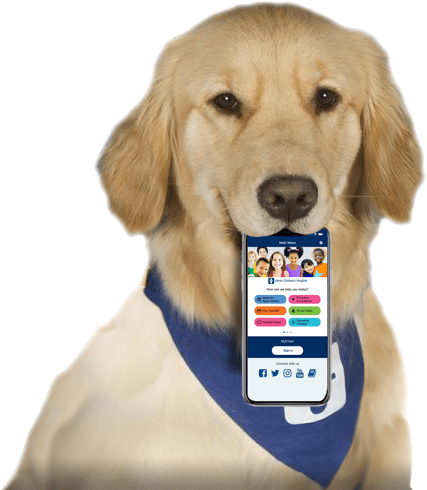Extracorporeal Membrane Oxygenation (ECMO)
What Is ECMO?
Extracorporeal membrane oxygenation (ECMO) is when a specially trained medical team uses a machine to do the work that the heart and lungs normally do.
What Is ECMO Used for?
When the heart or lungs aren’t working well, ECMO (EK-moe) can do their job for days, weeks, or even longer.
Often, that's long enough for:
- the medical team to fix the problem, such as with heart surgery
- the heart or lungs to heal from a problem, such as asthma or meconium aspiration
- a child to get a heart transplant or lung transplant
ECMO can help kids who have:
- heart failure because of a disease, such as hypoplastic left heart syndrome (HLHS) or cardiomyopathy (heart muscle weakness)
- lung failure because of a disease (such as pneumonia, asthma, or meconium aspiration syndrome) or before a lung transplant for cystic fibrosis
- infections that cause the organs to shut down, such as sepsis
What Does an ECMO Machine Do?
The ECMO machine, using a pump that works like the heart, pumps blood from the body through an artificial lung. Like a normal lung, it adds oxygen to the blood and removes carbon dioxide. Then the machine sends the blood back to the child.
How Is ECMO Done?
There are two kinds of ECMO:
- Veno-venous (VV) ECMO: This is used when the heart is working but the lungs need time to rest and heal. It takes blood from a large vein, adds oxygen, removes carbon dioxide, and returns the blood to a vein. The blood flows through the vein to the heart. Then the heart pumps the oxygenated blood out to the lungs and body.
- Veno-arterial (VA) ECMO: This is used when both the heart and the lungs need to rest and heal. It takes blood from a large vein, adds oxygen, and removes carbon dioxide. Then it returns the blood to an artery. The blood flows through the artery and out to the body. The heart continues to beat and pump blood out to the body too. But it doesn't have to work as hard as it did before ECMO.
What Happens Before ECMO?
Before your child has ECMO, the doctor or surgeon will talk to you about the risks and likely benefits. If you choose ECMO, you will sign a parental consent (permission) form.
Starting ECMO takes several steps. The treatment team will:
- Put medicine into the IV so your child will sleep, have no pain, and not move.
- Insert a breathing tube and attach it to a breathing machine called a ventilator (if your child isn't already using a ventilator).
- Give your child medicines to prevent blood clots, which can block blood vessels.
- Place cannulas (long, thin tubes) through an artery and/or vein and guides the tips to the heart.
- Use ultrasound scans or X-rays to be sure that the tubes are in the right place.
- Start ECMO.
Can I Stay With My Child During ECMO?
You can stay with your child at least some of the time during ECMO. It helps your child to hear your voice and feel your touch.
How long you can stay depends on how well your child is doing and what kind of medical care is needed. The team will let you know when you can stay and when to step out so they can do tests or treatments to help your child.
How Long Does ECMO Take?
A child may be on ECMO from a day to over a month or longer. It all depends on the child's health problem.
What Happens After ECMO?
The care team will do several tests to be sure ECMO is no longer needed, then turn off the machine and remove the cannulas. Your child will be eased off the ventilator as the heart and lungs continue to improve. This may take days or weeks.
Depending on why your child went on ECMO, they might need heart or lung medicines after they go off ECMO.
What Are the Risks From ECMO?
ECMO has significant risks. So doctors use it only when they've tried all other treatments and believe that ECMO will help.
Risks include:
- bleeding
- bubbles or clots in the blood that may block blood vessels
- infection
- problems with the machine
ECMO also can have some side effects, like swelling (edema), which is especially common during the first few days. The swelling usually goes away by the time ECMO is finished.
How Can Parents Help?
Children need extra support as they recover after ECMO. Some kids may have lung problems if ECMO did the work of the lungs. Others might have some trouble walking or talking, or have a hard time with their schoolwork. Talk to your ECMO team and your child's pediatrician if you have questions.
To help your child:
- Go to all follow-up medical visits.
- Give your child all prescribed medicines.
- Talk to your child’s school about making changes that would be helpful. For example, your child may need extra time to get to class, a tutor, or lighter academic workload.
Reviewed by: Michael Golecki, RN, BSN, CCRN
Date Reviewed: Sep 10, 2021
















